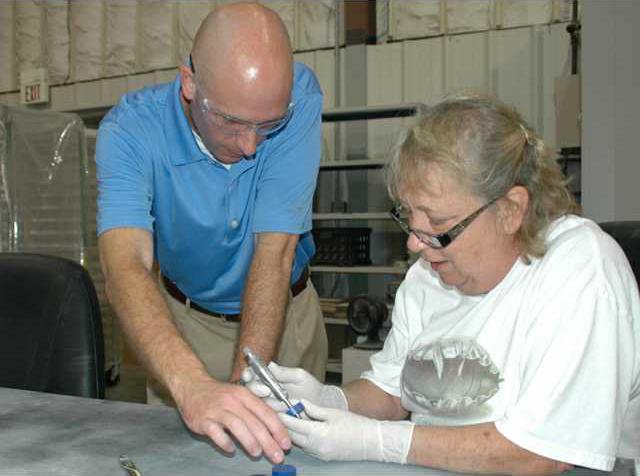A Liberty County manufacturer is among 255 companies worldwide selected to participate in a Massachusetts Institute of Technology study that explores whether manufacturing can be reinvigorated in the United States.
Elan Technology President P.A. “Tak” Argentinis shared his company’s strategies with researchers for the MIT “Production in the Innovation Economy” report, which was presented Friday during the program’s annual conference.
Elan, which employs 60 at its 90,000-square-foot facility in the Midway Industrial Park, was one of 12 companies selected in Georgia and 178 in the United States.
Established in 1948, Elan is America’s largest independent manufacturer of ceramic and electronic glass insulators used in the automotive, telecommunications, appliance, health, aerospace and defense industries. Argentinis bought the company in 1990, and in 1996, Elan relocated from New Jersey to its Liberty County facility.
MIT researchers met with Argentinis to discuss topics such as company management, training, human resources and new-product innovation. Researchers told Argentinis that Elan was selected as a result of its performance during the past 10 years.
Elan is among the group of featured “Main Street Manufacturers” that doubled their revenues and increased their head counts between 2004 and 2008 in addition to having more than $5 million in revenues and more than 20 employees.
“Our success is providing price, quality, on-time delivery and technical support,” Argentinis said, explaining that the company surveys its customers annually for performance evaluations. Several charts pinned to a wall in Elan’s offices indicate that scores average in the “very good” to “excellent” range and are on an upward trend.
“When you get a customer to write a letter that says, ‘I cannot find the words to thank you,’ that’s how you win,” Argentinis said, displaying a letter sent to Elan from a Fortune 10 customer.
The letter followed several weeks during which Elan engineers and press operators worked with the customer’s engineers to solve a challenging technical problem on one of the customer’s new, innovative products. After weeks of investigating and testing, the team identified the problem, and it was corrected overnight, Argentinis said.
Shortly after, Elan was awarded a five-year contract to create insulators for the new product, which will be produced in a new $170 million factory that employs 450 workers.
“Customers, like electrical current, follow the path of least resistance,” Argentinis added. “You give customers price, quality, delivery and customer service, and they will come to you.”
A productive workforce also is vital to Elan’s ability to compete with large overseas manufacturers such as Asahi Glass Co. and Nippon Electric, of Japan, and Schott Electronics, headquartered in Germany.
Argentinis said up to 80 percent of Elan’s workforce is composed of former 3rd Infantry Division soldiers from Fort Stewart. They came to Elan with technical training and discipline, and they are dedicated to meeting deadlines and creating quality products.
The sales per employee in Georgia have almost doubled compared to New Jersey, Argentinis said. In the Northeast, energy costs were higher and the presence of unions resulted in inefficiencies.
Since Elan employees in Georgia are not unionized, they have flexibility to work in multiple capacities, he added. When press operators have completed their orders, they can help inspectors prior to the shipping process.
When asked whether manufacturing jobs could come back to the United States, Argentinis did not hesitate.
“Absolutely,” he said, citing large companies such as GE and Ford — which recently announced an expansion in production of its Fusion models near Detroit — that have been returning their production operations to the United States.
“Do we want to be a service economy? No, we want to be an economy that is driven by skilled people. ...,” Argentinis said.
“If you’re making a part that goes into a cardiac pacemaker, people have to have it. If you make something that goes into a locomotive, people have to have it. … That’s what manufacturing is all about. Making products that people must have rather than products or services that are discretionary.”
The results of the study will be published this month in two books: “Making in America: From Innovation to Market,” by Suzanne Berger and the MIT Taskforce on Production in the Innovation Economy and “Production in the Innovation Economy” by Richard Locke and Rachel Wellhausen, editors.
For more information, go to web.mit.edu/pie/research/index.html.
Midway industry in MIT study
Elan Technology helping determine if manufacturing can be reinvigorated


Sign up for our e-newsletters